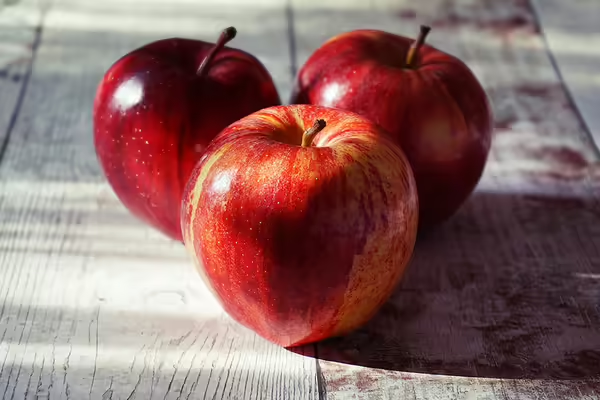
URBANA, Ill. – Brisk, fall weather brings crowds of Illinoisans to apple orchards to enjoy the crisp, juicy flavor of their favorite in-season apples.
“Whether fried, dipped in peanut butter or caramel, made into cider, or baked into a pie, apples are a delicious, sweet treat,” says Lisa Peterson, University of Illinois Extension nutrition and wellness educator. “And it’s easy to preserve your fall apple harvest by making homemade apple pie filling.”
To enjoy the fresh flavor of apples later in the year, Peterson recommends making apple pie filling now and preserving by water-bath canning or freezing to make into a pie later. It takes an estimated two pounds of apples, or one quart of canned apple pie filling, to make an 8- to 9-inch apple pie, Peterson says.
“When canning, always follow a tested, research-based recipe,” says Peterson. “Apple pie filling is no exception.”
Peterson explains that acidity levels control the safety of the filling; amounts of sugar and spice can be adjusted safely, but the amount of lemon juice required by a tested recipe cannot.
Golden Delicious, Rome, Stayman, and Granny Smith are all excellent quality apples for canning, according to Peterson.
Clear Jel®, one ingredient for canning apple pie filling, may be tricky to find. Clear Jel® is a modified corn starch that does not break down from the heat of boiling water bath canning like other starches. Clear Jel® can be found in bulk stores, cooperatives, and online.
“There is no substitute when canning apple pie filling, so make sure you have Clear Jel ® before you begin,” says Peterson.
For canning, Peterson recommends regular Clear Jel ®, which can tolerate the high temperatures of a boiling-water canner. Instant Clear Jel ® is not suitable for canning apple pie filling.
When canning is not an available option, consider freezing apples as an inexpensive method for maintaining product quality.
To freeze pie filling:
- Freeze filling in a foil-lined pie pan.
- Fold foil edges over frozen filling and remove it from the pan.
- Place foil-wrapped, frozen filling in a plastic freezer bag, and return it to the freezer.
- When ready to use, remove foil and place the pie pan-shaped frozen filling into a pastry-lined pan.
- Bake as usual but allow an additional 20 to 25 minutes of baking time for the frozen fruit to heat through.
Use the same process to prepare fresh apples for either canning or freezing.
“Peel, core, slice, and pretreat apples that you plan to preserve,” says Susan Glassman, Illinois Extension nutrition and wellness educator. “Apples brown quickly, so use an anti-browning treatment, such as Ascorbic acid powder or tablets, a commercial mix, or lemon juice.”
Soaking time for most anti-browning solutions is 3 to 5 minutes.
Glassman recommends working with smaller quantities to prevent browning and says that six large apples, sliced into 12 to 16 pieces, will yield approximately one quart of apple slices.
Varieties well-suited for freezing are: Ambrosia, Cameo, Empire, Fuji, Gala, Golden Delicious, Granny Smith, Gravenstein, Honeycrisp, Jazz, Jonathan, McIntosh, Pink Lady, Rome Beauty, and Stayman.
Since apples are an acidic fruit, Glassman cautions against using galvanized, copper, or iron equipment, since the fruit can react with metal, producing an off-color, off-flavor product.
Apples can be frozen in syrup, sugar, or dry pack, Glassman says. Syrup pack is best for recipes using uncooked apples, and sugar and dry packs can be used for pie making. When freezing, use a freezer bag or container.
Leave ½-inch headspace – the unfilled space between the food and top of container - for sugar and dry packs and 1-inch headspace for a syrup pack. Glassman recommends using frozen sliced apples within 8 to 12 months for best quality.
For more research-based information on canning, drying, freezing, and fermenting apples and other foods, visit go.illinois.edu/PreserveFood. Need a quick answer? Find contact information for your local University of Illinois Extension office at go.Illinois.edu/ExtensionOffice.
SOURCES/WRITERS: Susan Glassman and Lisa Peterson, Illinois Extension Nutrition and Wellness Educators
EDITOR: Liz Smith, Illinois Extension Marketing and Communications
ABOUT EXTENSION: Illinois Extension leads public outreach for University of Illinois by translating research into action plans that allow Illinois families, businesses, and community leaders to solve problems, make informed decisions, and adapt to changes and opportunities.